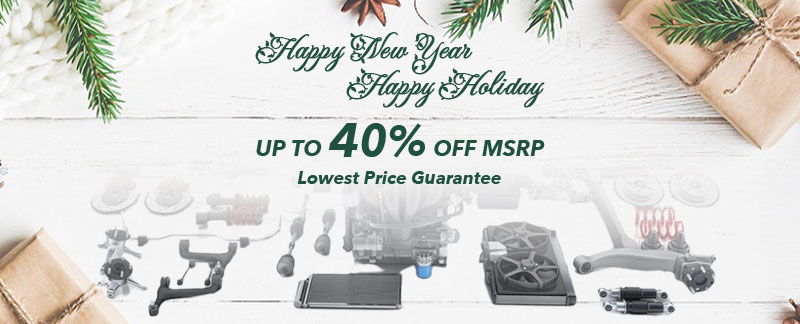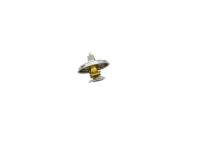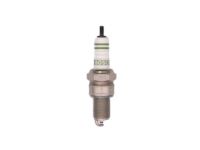- Hello
- Login or Register
- Quick Links
- Live Chat
- Track Order
- Parts Availability
- RMA
- Help Center
- Contact Us
- Shop for
- BMW Parts
- BMW Accessories

Why choose BMWPartsDeal
- Genuine Parts
BMWPartsDeal.com is the best source to buy genuine BMW 2500 parts that add a special touch of care to your vehicle. If you're looking to buy new BMW 2500 parts and accessories, we feature parts with OEM standards. Our team uses the most trusted components to ensure optimal fit and durability for your vehicle.
- Low Prices
Are you shopping on a budget? To compete in the car market with better quality, better designs, and more cost efficiency we offer parts that meet each specific BMW 2500's specifications at unbeatable prices. BMWPartsDeal.com has the best deals on competitively costly BMW 2500 parts so you can restore your car in no time. We offer unbeatable prices without sacrificing the quality.
- Quick Shipping
We too are known for processing orders quickly and efficiently. Shopping on BMWPartsDeal.com is the easiest way to get your genuine BMW 2500 parts. All the parts on our website are on hand and ready to ship straight to your door once your order has been made.
Popular Genuine BMW 2500 Parts
- Engine Parts View More >
- Front / Rear Axle Parts View More >
- Vehicle Electrical System Parts View More >
- Vehicle Trim Parts View More >
- Engine Electrical System Parts View More >
- Brakes / Pedals / Wheels Parts View More >
- Cooling / Exhaust System Parts View More >
- Steering / Drive Shaft Parts View More >
- Fuel System Parts View More >
- Bodywork Parts View More >
- Heater and Air Conditioning Parts View More >
- Lighting Parts View More >
Shop Genuine BMW 2500 Parts with BMWPartsDeal.com
Introduced as a linchpin model in BMW's illustrious New Six series, often referred to as the E3 lineup, the BMW 2500 carved out its place in automotive history from 1968 to 1977. It served as BMW's enthusiastic reentry into the full-size luxury sedan arena, a market where Mercedes-Benz was then the uncontested leader. Armed with the revolutionary M30 straight-6 engine - a marvel in mechanical engineering that would later become a fixture in BMW's lineup - the 2500 was far ahead of its time. This vehicle didn't just share its mechanical foundations with the chic E9 coupés; it took it a step further by introducing a finely-tuned, technologically-advanced suspension system that redefined expectations for ride quality and handling. The car thus played a pivotal role in bolstering BMW's reputation as a manufacturer that could blend sporty performance with unparalleled luxury. Geographically expanding its footprint, the 2500 was introduced to the U.S. market in 1969, cleverly priced to offer a cost-effective yet high-performing alternative to its more expensive stablemate, the 2800. In terms of aesthetics, the 2500 was a work of collaborative artistry. Wilhelm Hofmeister, one of BMW's design visionaries, set the initial tone, which was later finessed by the Italian design studios of Bertone and Michelotti. The result was the iconic twin headlights seamlessly incorporated into the grille, a signature feature that would influence BMW's design language for many subsequent generations. Fabricated in BMW's state-of-the-art Munich welding facility, the 2500 was brought to life on an impressively economical budget of 70 million D-mark, epitomizing BMW's uncanny ability to couple engineering excellence with fiscal prudence. With a production total nearing 190,000 units for the E3 series, the 2500 remains a touchstone in BMW's rich heritage, embodying the brand's enduring commitment to synthesizing luxury and high-performance dynamics.
The BMW 2500 was part of the 'New Six' E3 series that introduced into the market by BMW as a luxury sedan in 1968. However, despite its reputation for being a well-designed car, this car faced several issues. Consequently, due to the faulty design which did not meet various driving conditions, overheating was common especially since air conditioning combined with high temperatures to reflect poor adaptation to conditions that differed during driving. Furthermore, it would require much work due to rust mostly found at the back of headlights and around wheel arches among other places. Another major problem that was often difficult to identify and mend were oil leaks from the engine. This made automatic transmission cars hardly worth owning because there were many complications associated with their maintenance. Nonetheless, this vehicle is still considered one of BMW's most esteemed classics ever made since it is synonymous with elegance blended with performance.
OEM parts are the best in terms of quality. They are made following BMW's official factory standards to ensure their durability and fit. These parts go through rigorous quality control tests to minimize any flaws or imperfections. Here at our website, we offer a wide selection of genuine BMW 2500 parts, like Gearshift / Clutch/ Transmission at unbeatable prices. Further, OEM come with the reassurance of the manufacturer's warranty and are subject to our no-hassle return policy. We also ensure speedy delivery right to your doorstep for any 2500 parts you order.
BMW 2500 Parts Questions & Answers
- Q: How to remove and test a thermostat in a cooling system on BMW 2500?A: Drain the cooling system and remove the thermostat. Clean it and test in heated water. It should open at 84 'C for manual models, 50'C for automatic models, and close quickly in cold water. If it works, refit it, ensuring the clamp and arrow face the direction of travel. Clean the housing, refit the cover with a new gasket if needed, and tighten the bolts evenly. Refill and bleed the system.
- Q: What are the recommendations for inspecting and maintaining sparking plugs on BMW 2500?A: Sparking plugs should be of the recommended type, details of which are given in Technical Data. Inspect and clean the plugs regularly. When removing them, ensure that their recesses are clean and dry so that nothing can fall into the cylinders. Have the plugs cleaned on an abrasive blasting machine and tested under pressure with the electrode gaps correctly set at 0.6 to 0.7mm (0.024 to 0.028in). The electrodes should be filed until they are bright and parallel. The gaps must always be set by bending the outer electrode only. As a general rule, plugs should be cleaned and tested at about 6000 mile intervals and renewed at about 12,000 mile intervals, or before if badly worn. The HT leads from the distributor to sparking plugs and coil should be examined for cracks and defective insulation. Renew any lead found to be defective in any way. Lead connectors are of the plug-in type.
















































